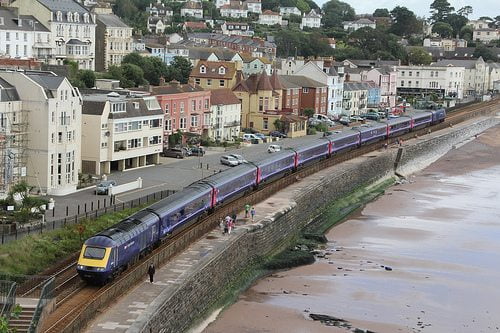

Economy
Dawlish: the Beeching axe’s disastrous economic impact on the south-west
The foolishness of the railway cuts of the 1960s becomes more apparent with each passing year. Dawlish, on the Devon coast, is just the latest example of cutting a system beyond its own resilience.
Rising passenger numbers have led to dangerous overcrowding on some lines. Increased freight necessitates the controversial HS2. And extreme weather means whole counties can be cut off from the rest of the UK, as in Dawlish.
After the Beeching cuts, the Riviera line on the South Devon Railway Wall remained the single rail artery between West Devon and Cornwall and the rest of the UK. This is a vulnerable but amazing engineering feat designed by Isambard Kingdom Brunel and opened in 1846. It runs along tidal waters for 13 miles and is open to the sea for four of them.
The recent extreme weather undermined the line at Dawlish, closing it for at least six weeks. The Western Morning News was reporting this line could be cut for up to six months. Plymouth, a city of quarter of a million people, no longer has a rail link to the rest of the UK.
Tim Jones, of the Devon and Cornwall Business Council, said, “We’ve done some initial assessments of what it will cost and we estimate it will be between £1m and £2m a day.” That’s a range of £42-£365m for Cornwall which is one of the poorest in the UK.
Had the Beeching cuts not taken place, an alternative rail route via Okehampton would have been available for passengers and freight. London and South Western Railway’s Plymouth to Exeter inland route skirted the western edge of Dartmoor, but the central part of the line was closed and ripped up in 1968, as a result of Beeching.
Former MP for Totnes, Anthony Steen, had argued for the line to be reopened. One of the arguments was the risk to the Riviera line from flooding or erosion, which was prescient of the last few days.
The Okehampton to Bude/North Cornwall/Bodmin to Wadebridge railways (the latter now the Camel Trail), closed between 1966 and 1967, would have provided another route further south, between Cornwall and Devon.
Beeching has many defenders. At a single point in time, on a very narrow cost-benefit analysis, with all other things being equal, he probably was right. But we live in a dynamic economy and have a road network that couldn’t reasonably scale to cope with significant economic growth.
Leaving just one 170-year old rail line, partly running along a shoreline, into a peninsula with 1.6 million residents and 700,000 visitors doesn’t sound particularly resilient, but a very London-based decision.
Devon and Cornwall, along with the rest of the UK, will suffer for Beeching’s lack of long-term vision for decades to come.
Further reading:
On this day in 1963: the Beeching cuts were not a cut or axe; they were butchery
Rail investment will speed up journeys and lower emissions
Average 2.8% rail fare comes into force
Unsustainable rail price fare rises for 10th successive year


 Environment10 months ago
Environment10 months agoAre Polymer Banknotes: an Eco-Friendly Trend or a Groundswell?

 Environment11 months ago
Environment11 months agoEco-Friendly Home Improvements: Top 7 Upgrades for 2025

 Features9 months ago
Features9 months agoEco-Friendly Cryptocurrencies: Sustainable Investment Choices

 Features10 months ago
Features10 months agoEco-Friendly Crypto Traders Must Find the Right Exchange



























